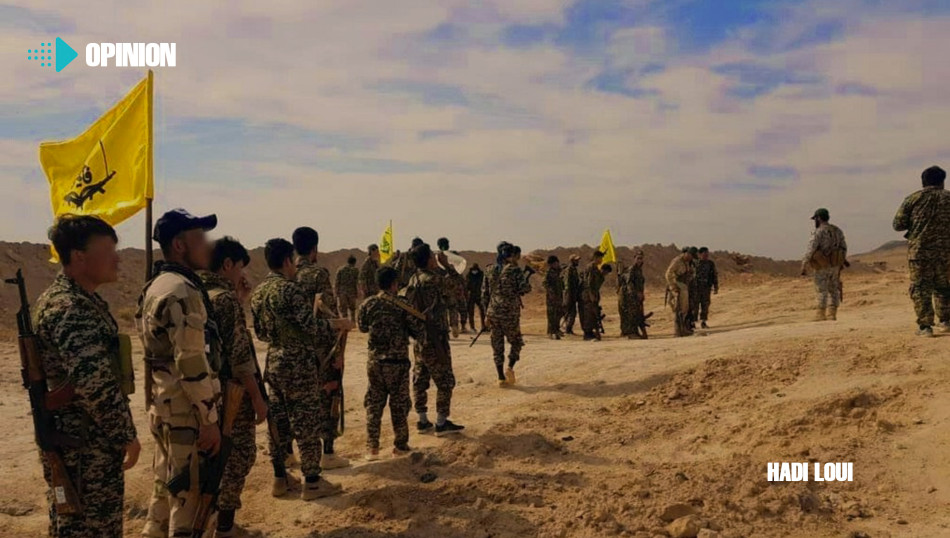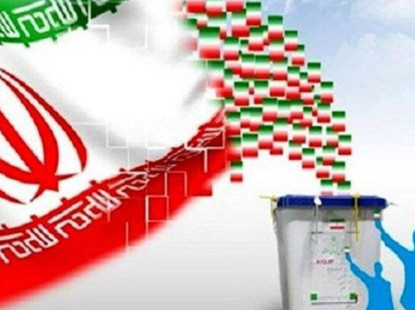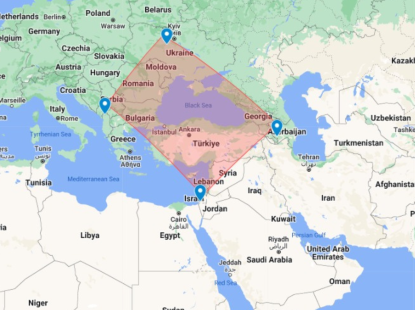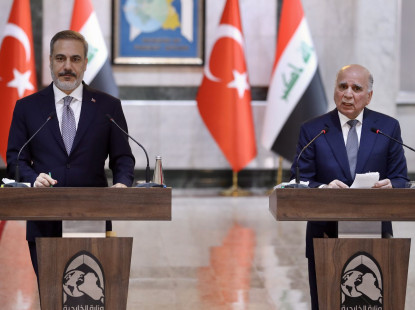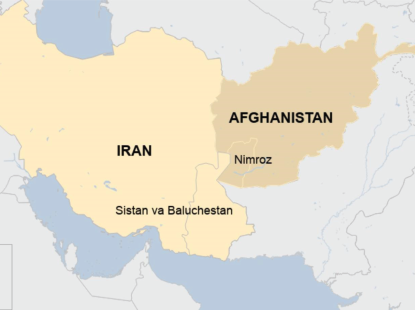The Idlib Front and Iran’s Weakening Foreign Operation Capacity
Damascus and Moscow’s recent attacks on Idlib, has opened up an important space for Iran to display its power; since its Quds Force has not been able to sustain its former influence in all of its operation areas in the last 40 days following Soleimani’s death.
After the Arab Spring, the historical competition between Turkey and Iran has accelerated. While Turkey supported the popular movements with vision of enduring peace and democratization in the region, Iran started to organize delegated powers similar to Hezbollah during the emergent vacuum of authority and focused on empowering its network of Shiite militia by means of employing sectarian identities. The two countries’ different visions of the Middle East led to an increase of tensions. The most important arena in which Turkey’s vision of regional development and integration is confronted with Iran’s regional strategy that prioritizes geopolitical gains, has become Syria.
Iran has opposed Turkey since the beginning of the Syrian civil war; it has deployed more than eighty Shiite militia groups in Syria thus far. Remaining silent in the case of hundreds of air strikes by Israel in its eastern and northern regions, Tehran took a very aggressive stand against the Turkish-backed Free Syrian Army in the northern frontier. Ignoring Ankara’s concerns about the struggle against terrorism during Operation Peace Spring, Tehran, now, moves its Shiite militia in the region against Turkey who is trying to prevent a great humanitarian crisis.
With Russia’s support of Turkey after the July 15 attempt of coup d’état, a period of close relations between Ankara and Moscow ensued; and the two countries changed their approach of zero-sum game to an understanding of “win-win,” preferring collaboration to conflict. Having no part in the ensuing close relations, especially in regards to Syria, Tehran had to follow suit for a while. However, in spite of all these attempts at collaboration, the aims of Russia and Iran in Syria started to contradict the national interest of Turkey. This contradiction became conspicuous with the Idlib attack. But while Russia, despite everything, demonstrated that it does not consider Assad indispensable and that a bargain is possible; Iran considers Assad’s survival equivalent to its own.
The condition of a Quds Force without Soleimani in Syria has been a cause of great concern for both Damascus and Tehran. After the elimination of Soleimani, who was both the architect of and the fully authorized commander in the field of the Middle East strategy, it was estimated that there will be a decrease of Iranian activity in Syria and Iraq. In this regard, failing to coordinate its operations in Syria and forces in the area, Tehran requested that the Lebanese Hezbollah take action in order to fill in for Soleimani.
In Iraq, the loss of al-Muhandis, which considering the goals of the Quds Force, had a more severe impact than the loss of Soleimani. This loss impaired Iran so much that it was forced to play the Muqtada al-Sadr card. The failure of plans like “popular demonstration of millions;” encountering the opposition of anti-Iran Shiite youth; and his inability to assert authority over other militia groups revealed Sadr’s unproficiency. Unable to obtain their expectations with Sadr, Iran, as did in Syria, requested that Lebanese Hezbollah meet with the commanders of Popular Mobilization Groups in Iraq as well. According to the report published by Reuters on Tuesday, the delegate of Hezbollah, Sheikh Muhammad al-Kawtharani met with the leaders of the militia with the purpose of “uniting them in the face of the emergent great gap with the loss of their powerful mentor” and “coordinating their political activity.”
The newly appointed commander to the force after Soleimani, the Brigadier General Esmail Ghaani, has mainly focused his military career in Iran’s eastern hinterland, primarily in Afghanistan. Therefore, it was estimated that the Quds Force would increase its activities in Afghanistan after his inability to coordinate his forces in Syria and Iraq. Although, for this reason it was expected that Ghaani would show off power in Afghanistan, it did not happen. The Tehran who cooperated with the USA during its invasion of Afghanistan against the Taliban, with a new manoeuver, had started to regard the Taliban as “Afghan Mujahideen.” However, it is apparent that the Taliban does not feel the same connection toward Tehran. For despite Tehran’s attempts at disruption, progress has been made in the peace meetings between the USA and the Taliban; the Taliban has put forward the “cooperation with Iran” card only to achieve the upper hand in the negotiations with the USA.
In that the Quds Force has not been able to sustain its former influence in all of its places of duty in the 40 days of Soleimani’s death, therefore, Damascus and Moscow’s Idlib attack has opened up an important space for Iran to boast about its power. Here emerges a condition of reciprocal needs between Tehran, Moscow and Damascus. Providing only an air support to the Damascus regime, Russia is aware that the regime army will not be able outmaneuver the dissident forces in Idlib and that it is only possible to make progress with the involvement of Iran’s highly motivated Shiite militia at the forefront. The Russian attempts to move into Idlib in the last two years indeed have failed as the targets were not achieved. In August 2019, that the regime took control in Khan Shaykhun, was only possible with the dispatch of Iran-backed militia to the region which was enabled by the new agreement made between Iran and Russia.
Although Iran is maneuvering in the space created by Moscow, Russian interest does not coincide with Iran except for the northern frontier. It is obvious that Russia, despite having control of the airspace of Syria, leaves Iran alone in the face of frequent air strikes by Israel in the South and the Syria-Iraq border. Tacitly allowing Israel’s attacks, Russia did not allow for the deployment of air defense systems in the southern and western frontiers by Iran who wants to prevent Israeli aircraft to target, in particular, the personnel of Revolutionary Guard Corps and the Iraqi and Lebanese militia.
Finally, despite Iran’s attempts to show its power in the Idlib frontier under the protective umbrella of Russia, Tehran’s shortfall of coordination in the field is conspicuous. As understood by the recordings published by the newspaper Telegraph, Iran is unable to provide sufficient support of reinforcement and supplies to the Fatemiyoun brigades consisting of Afghan Shiites in the region. According to the news shared by the Shiite militias on the social media, 12 Shiite militia who are mostly Pakistani, were killed in the northern region of Khan Tuman on 4 February. At the time of publication of this opinion piece, Iran-back Shiite militia lost more than 100 casualties. According to the statements of the militia, lately, there have been “surprising mistakes and insufficiencies” in the coordination of the force in the area and shipments of reinforcement. Again, in their statement, the prominent problem at the moment is that the units of combat engineers are “inactive with respect to fortification.” Herein lies many hints regarding the problem of coordination. Even though Iran attempts to boast about its power in the short-term, the weakening of the Quds Force in its capacity to command and coordinate, will make it difficult for Iran to sustain its activities throughout Syria.
